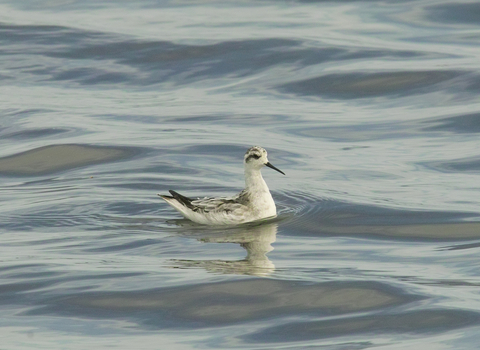
©Derek Moore
©Derek Moore
Red-necked Phalarope ©Sarah Lawrence
Red-necked phalarope
A delicate wader, Red-necked phalaropes are as comfortable swimming as they are on land. Unusually for birds, the females are more brightly coloured than the males.
Scientific name
Phalaropus lobatusWhen to see
May to SeptemberSpecies information
Category
Statistics
Length: 18-19cm Wingspan: 36cm Weight: 36gProtected in the UK under the Wildlife and Countryside Act, 1981. Classified in the UK a Red List species under the Birds of Conservation Concern review and as a Priority Species in the UK Biodiversity Action Plan.
